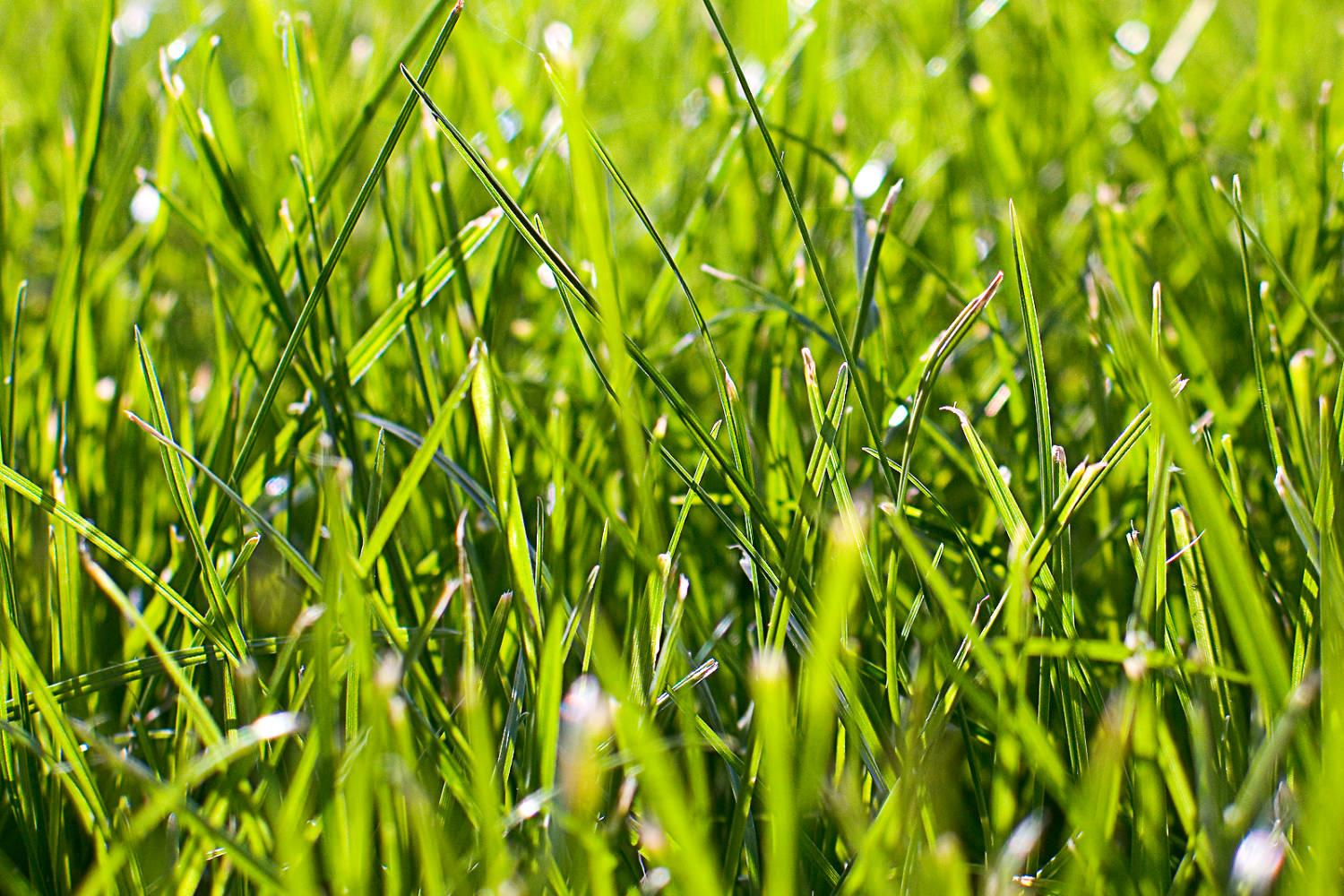One of the best ways to improve your photography is to take a common, everyday object that most people would ignore, and experiment with ways to capture it in a new and interesting way.
Grass is a perfect example. We are surrounded by it, making it one of the most easily-accessible subjects to photograph, yet most of us would completely overlook it as something which can make a fascinating photo in its own right.
If you take the time to examine it in detail, you'll realise that grass is full of opportunities for a great shot. It comes in a wide variety of colours, textures, and thicknesses, and hides other interesting subjects such as people, insects, and discarded objects.
Types of Grass
Grass comes in a huge range of varieties, all with different characteristics - short and regimented, tall and tangled, thin, thick, different shapes, densities and colours, some with heads, some without heads, and so on.
Experiment with photographing different types and varieties of grass. Image by Sam Kim.
Go for a walk and see just how many different types of grass you can find; don't feel you have to limit yourself to photographing the grass growing on your back lawn.
Experiment with Angles
Because grass is so accessible, we usually have full range of motion around it. Experiment with different viewpoints to achieve different effects - low and close to show all the intricate details and textures; peering through the grass, perhaps towards another object; or looking down from above to emphasise the patterns it forms.
See if you can find an interesting angle to shoot from. Image by Maurizio D'Arrigo.
Zoom in as far as you can to capture the fascinating textures and lines on an individual blade. This usually produces a more interesting photo than one of a large expanse because it offers us a much closer view than we are used to, inviting us to study and explore the photo.
Challenge the viewer - play with your camera, turning it at an angle, sideways, or upside down. This gives the grass a more abstract appeal, and engages the viewer more because it isn't immediately obvious what the photo is of.
Colour
Colour is very important in photography, and grass has it in spades - from lush greens to fiery reds to pastel yellows and more.
Grass doesn't just come in green. Image by horizontal.integration.
Consider the colours you'll be including in your photo. Do you want it to be composed of variations of a single colour or many different ones? Should they complement each other or do you want to use contrasting colours to add a focal point to the image? By shifting your position and reframing the shot you can achieve the desired effect.
Texture and Detail
One of the most intriguing aspects of grass photography is the variety of interesting textures and details available for you to work with - from the lines on an individual blade, to the way several blades entwine, right up to the patterns formed on a large lawn when it is mowed.
Find an interesting detail about the grass you're photographing, and capture it in a creative way. Image by Jenn Forman Orth.
Examine your grass at all levels - from far away to very close up - to see what stands out for you. Then base your viewpoint and composition around this interesting feature.
Light
Due to the nature of grass (outside!), you'll most likely be limited to using natural sunlight. But you can still achieve a great deal of control over the lighting by choosing the time of day, and adjusting your viewpoint to control the light's direction.
You can control the lighting by carefully choosing the time of day and shooting direction. Image by Seymore Sinn.
To bring out the detail and texture in your grass, light it from the front or side. If you want to focus on the grass's shape, use back lighting to reduce the prominence of the textures, or even to create a silhouette.
A bright, sunny day will give you a photo with vivid colours and high contrast, while a duller, overcast day gives a softer light. Early morning and evening are both perfect for photographing grass silhouettes.
For even more control over your lighting, use a simple piece of plain white paper or card as a reflector.
Include Other Objects
Including objects of additional interest helps to create a focal point in your photo. From dew to insects, from people to the sky, the choice is endless, so pick something that reflects the mood of your scene, and your personality. If you can't find any natural points of interest, feel free to cheat and introduce your own objects into the scene!
Including other items adds a focal point to your photo. Image by moogs.
